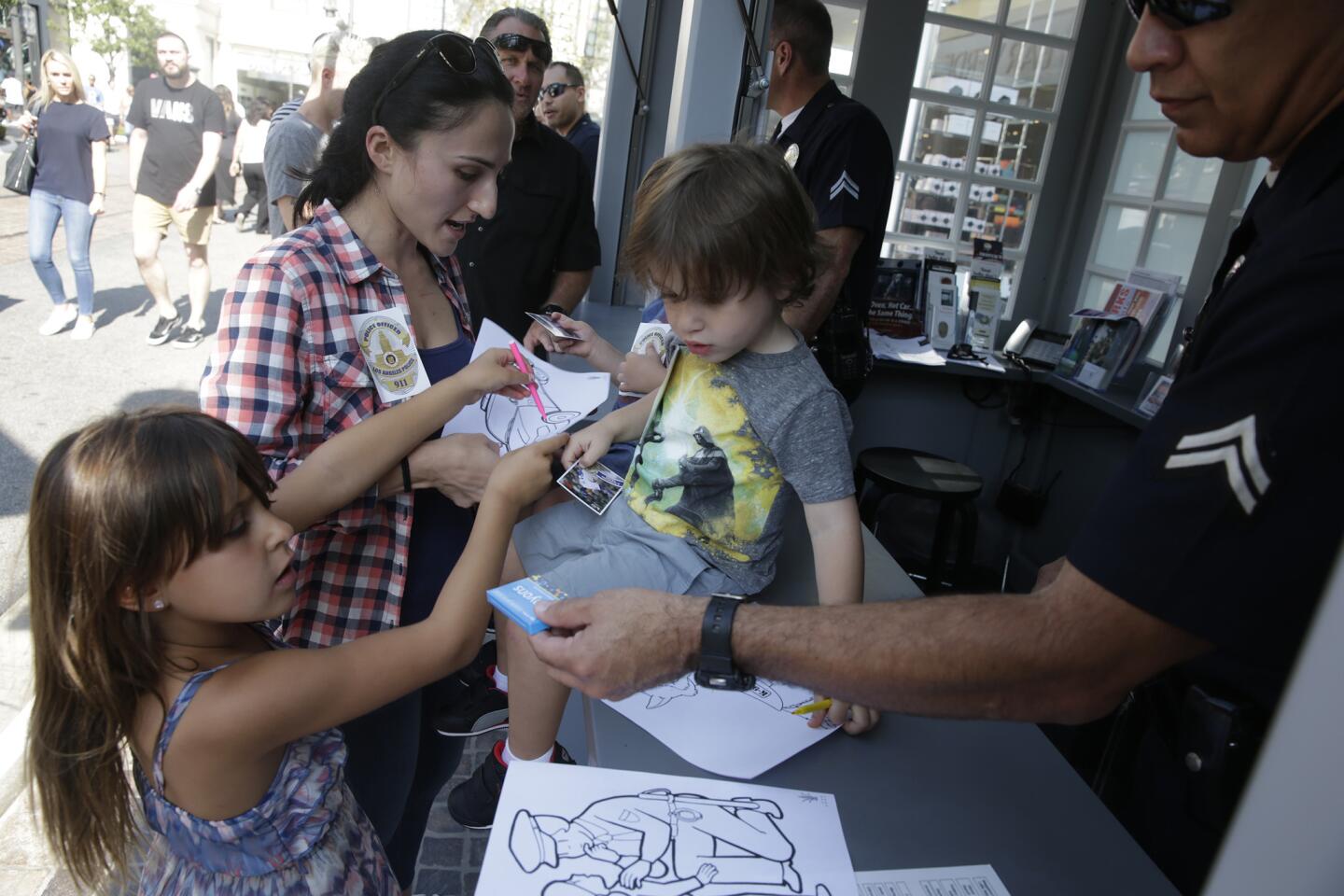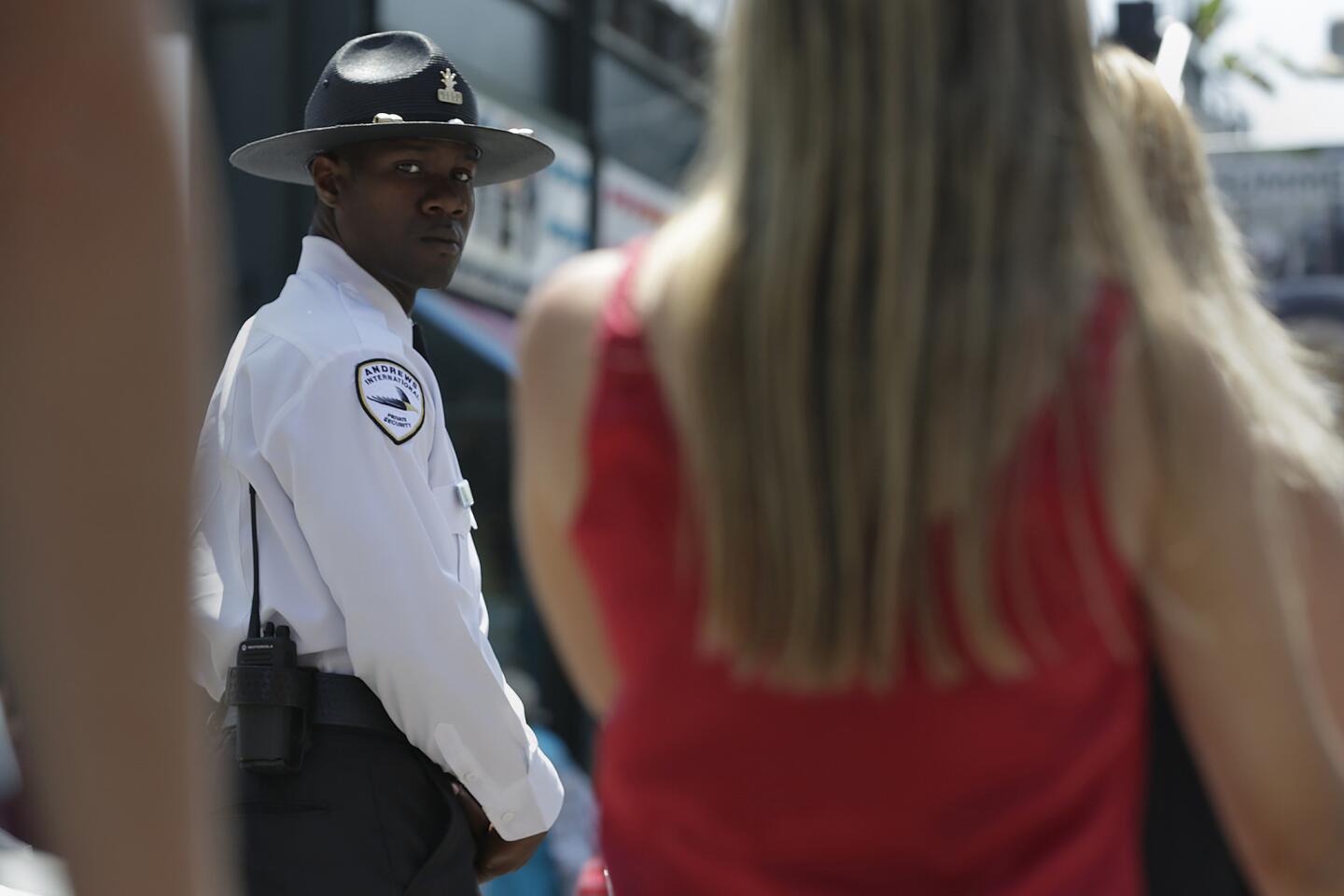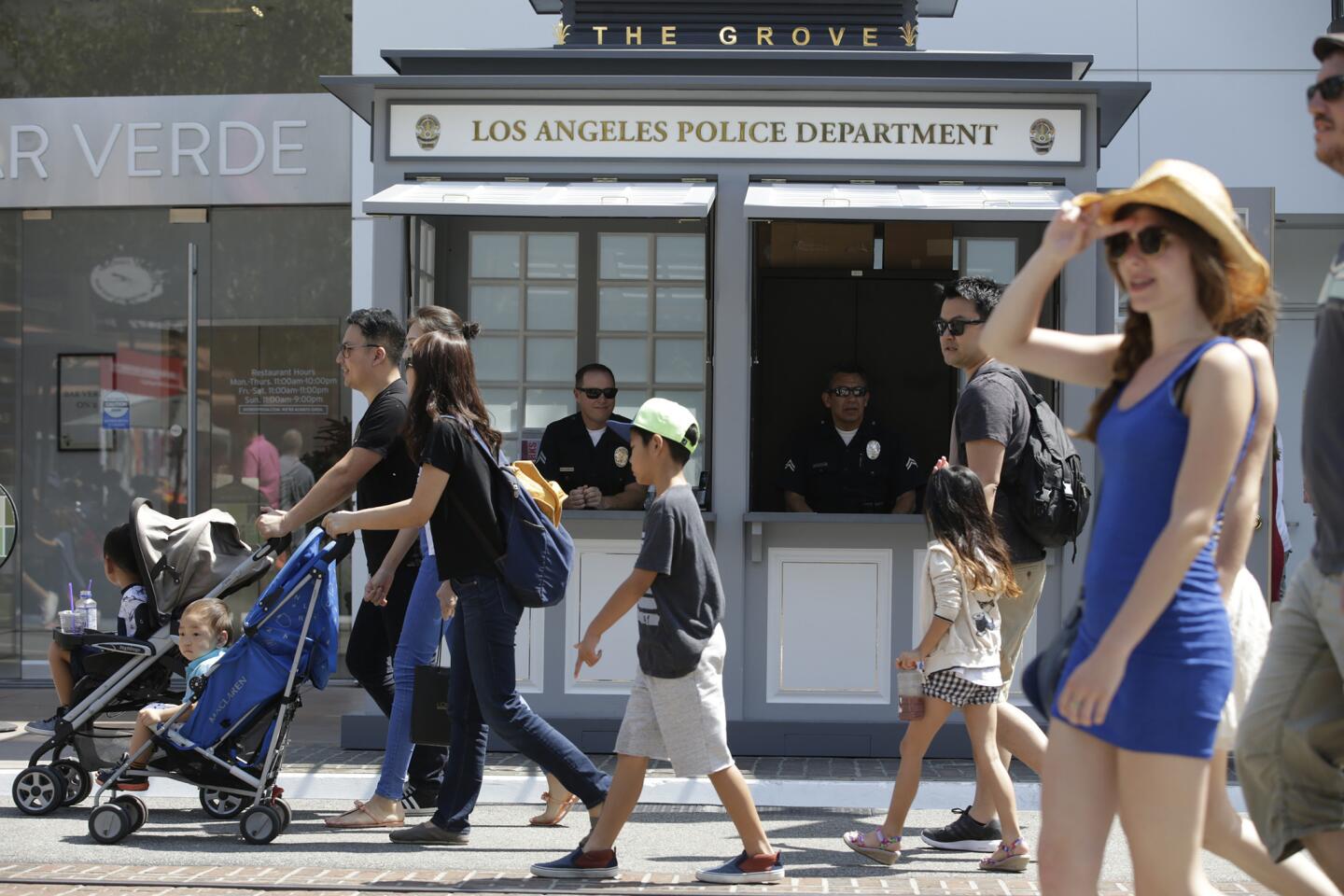Malls and theme parks pour money into preventing Orlando-style attacks
- Share via
The people handling security for the nation’s busiest malls and amusement parks are no longer retired cops. They are a 24-year veteran of the FBI, a former CIA operative and the one-time chief of counterterrorism for Scotland Yard.
The theme-park industry’s annual security bill, already roughly $250 million a year, is expected to grow by more than $100 million over the next few years, according to one consultant. Disneyland, Universal Studios Hollywood and SeaWorld all installed metal detectors outside their gates for the first time last December.
“Lone wolf” shootings like those at the Pulse nightclub in Orlando earlier this month, and in San Bernardino last December, have forced businesses to shoulder more of the cost and responsibility of securing America against terrorism.
The coordinated terrorist attacks of 9/11 led airlines to spend billions more to secure airports, backed by passenger fees. But assailants like Omar Mateen, Syed Rizwan Farook and Tashfeen Malik chose more diffuse targets where they could inflict the largest number of casualties as quickly as possible.
Now businesses that bring large groups of people together are pouring ever-increasing amounts of money into the quixotic task of keeping them safe.
American companies were already spending about $341 billion on security in 2014, more than three times as much as they did in 1990, after adjusting for inflation, according to ASIS International, a professional group for security personnel. The group said that since 2013, companies have been spending about 10% more on security each year.
Closed-circuit cameras alone have become an $8-billion industry, about 17 times larger than it was two decades ago.
The trick for many companies is to ramp up security without terrifying their customers.
Shoppers strolling through the Grove complex in the Fairfax district every year may not know they are being watched by more than 300 cameras and two sets of security teams – one in uniform and unarmed, the other incognito and armed. That doesn’t include several on-duty LAPD officers.
In January, Caruso Affiliated, which owns the Grove and several other major malls in Southern California, hired Brenda Heck to head up security. She had spent two decades at the FBI, most recently running the counterterrorism division in the bureau’s Washington field office.
Throughout the year, Heck trains the entire mall staff – guards, but also gardeners, housekeepers, every single person working at a store and every retail executive – how to identify suspicious behavior, how to use a mass communication system if there’s dangerous activity on the property and whether to shelter in place.
“It’s the Western way of life, the open public spaces that we have,” said Heck. “You can’t have an army out front of everyone’s properties, it isn’t feasible.”
The mall’s billionaire owner, Rick Caruso, spends more than $10 million a year on security.
“It is now the cost of doing business in the United States, and eventually it is going to get paid for by the consumer,” Caruso said.
In 2013, Westfield Corp., which owns 32 malls across the country, hired John Yates, who was previously the top counterterrorism officer at Scotland Yard in the United Kingdom.
In 2008, Disney hired Linda Reid as director of global intelligence after she had spent 18 years as an intelligence officer with the CIA. She’s now also a vice president of security.
Nearly half of the active-shooter incidents since 2000 – where someone sought to kill people in a confined, populated area – happened in places of business, the FBI reported.
“If you have lone-wolf attacks like this, hatched in the minds of a disturbed person, then we’re going to have to take different kinds of steps in order to prevent something like this from happening,” President Obama said in the wake of the Orlando attack.
In addition to metal detectors, Disneyland put bomb-sniffing dogs outside its properties. Company officials would not say at the time whether the move had anything to do with terrorist threats, but it came weeks after the San Bernardino shooting and a month after the November 2015 attacks in Paris, when gunmen and suicide bombers killed 130 people at restaurants, a stadium and a concert hall.
“The safety and security of our guests and employees is our first priority,” Universal Studios spokeswoman Audrey Eig said in an email, adding that she could not discuss the company’s security process.
Disney declined to comment. SeaWorld did not respond to requests for comment.
After the Orlando shooting, the Abbey Food & Bar, a crown jewel of West Hollywood’s gay nightlife, began stationing an armed guard outside the premises and became more diligent about searching bags and using a wand to scan clubgoers.
David Cooley, the club’s owner, said that those measures amounted to “a nominal cost” that he considers unavoidable for a gay bar that draws a crowd.
“The unseen costs can actually have a greater impact,” Cooley wrote in an email. Lines got longer after the club started rigorously inspecting each person who walks in. No one has complained so far, said Cooley; that could change.
“The challenge will be in a few weeks and months when security is not top of mind for people and they are less inclined to be inconvenienced,” he wrote.
Dennis Speigel, the president of International Theme Park Services Inc., a consulting firm based in Ohio, estimated that Disney spends upward of $75 million on security per year at all of its properties. He said costs have skyrocketed for all major amusement parks in the last several months.
“Paris was a catalyst for everybody, because with that carnage, the way it was spread around the city at the same time, it indicated to us in the leisure industry that this can happen anywhere at any time,” Speigel said.
Part of the reason companies are spending more, one plaintiff’s attorney contends, is that every time another attack occurs, the chance that they will be held liable may go up.
In May, a jury rejected a lawsuit brought against Cinemark by survivors of the 2012 shooting at one of the chain’s movie theaters in Aurora, Colo.
The company won because it convinced the jury that the assault was unforeseeable. But the lawyer who represented the survivors, Marc Bern, says that argument is already losing credibility.
“How can you say this might not happen in a theater? It happens everywhere. It happens in a school,” said Bern, a partner at the New York City firm Bern Ripka LLP.
Security lapses, in some cases, may have made it easier for assailants to cause harm.
After casing the Aurora theater, James Holmes knew there were no cameras outside and that there weren’t any guards on duty on Thursday, when he chose to attack, Bern said.
Farook and Malik entered the Inland Regional Center in San Bernardino through an unlocked entry point.
There were no armed officers outside Sandy Hook Elementary School, in Newtown, Conn., when Adam Lanza shot his way through a locked door and killed 26 children and staff.
The rub, experts say, is that no amount of investment comes with a guarantee of stopping mass carnage.
At Pulse in Orlando, a uniformed police officer exchanged fire with Mateen, but the 29-year-old, armed with a semi-automatic rifle, burrowed into the club and kept shooting. He was ultimately shot dead by a SWAT team.
“If the only reason for security is to try to prevent a mass shooter from killing people, there might be better ways to spend your money,” said Henry Willis, the director of the Homeland Security and Defense Center at the Rand Corp. “The types of things we have been seeing are almost impossible to prevent.”
The element of surprise can easily overwhelm a trained guard, and the best-case scenario is often that law enforcement officers arrive quickly and “kill the shooter before they kill too many people,” Willis said.
More fundamentally, it isn’t clear that the safest version of the United States is a place that Americans would actually want to live.
An example of what that would look like is Israel.
“Security is something that is budgeted into regular business practices in Israel,” said Robert Tucker, the owner of T&M Protection Resources, a New York-based consulting firm that also employs 8,000 security officers in Israel.
In Israel, there are security guards outside every single restaurant, people get their bags checked before walking into a supermarket, and metal detectors are stationed at the gates of shopping centers.
But there’s more that separates the two countries. The entire Israeli population itself is essentially a trained security force.
Just about every man and woman in Israel has served in the military, and they remain on high alert long after their stint as soldiers. A package is not left unattended for more than a few minutes before a civilian notifies law enforcement, Tucker said.
“[Israelis] never wake up in the morning and say, ‘Today the threat level is lower,’” Tucker said. “Two weeks after Orlando, two weeks after San Bernardino, two weeks after Columbine, people forget here in America.”
Follow me @NatalieKitro on Twitter
ALSO
Are Airbnb hosts in greater danger of identity theft?
Shamrock looks for luck with iconic artists’ music rights
‘Brexit’ could halt the growth of California trade with Britain
More to Read
Inside the business of entertainment
The Wide Shot brings you news, analysis and insights on everything from streaming wars to production — and what it all means for the future.
You may occasionally receive promotional content from the Los Angeles Times.
















